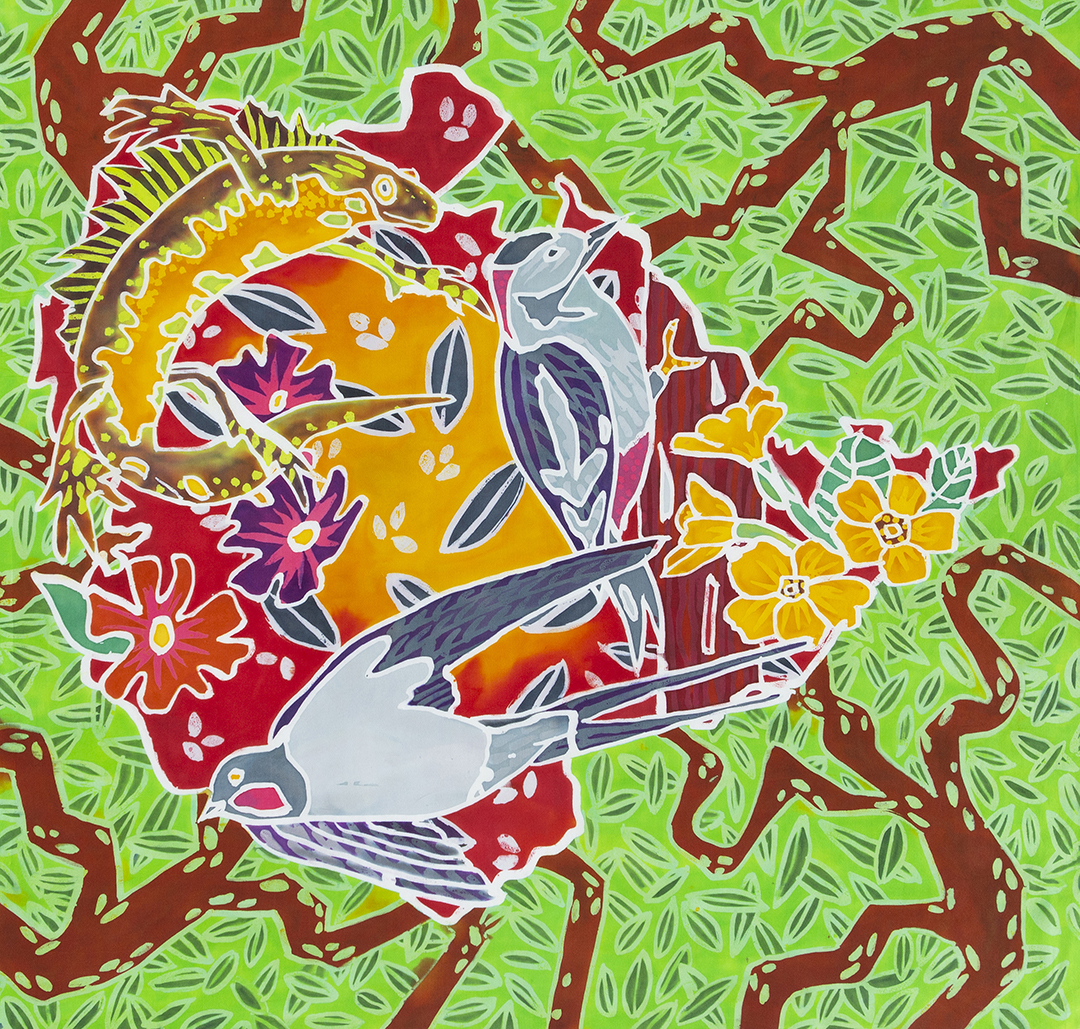
52. A Walk over the Hills in April 2020
It is a Wednesday morning, towards the end of April and a group of ladies from the Wednesday Women’s club and some of The Friends of Langdon Hills meet us underneath the wooden statue of William Langdon Woodward. The sky is bright blue without a cloud to be seen. The car park is full of dog walkers, children running excitedly from the cars to venture into the country park to see what it has to offer. As a group, we set off on our walk in a southerly direction, led by our Ranger and are soon overlooking the Thames Estuary. To the SE we can clearly see Southend Pier, at over a mile and a quarter long this is the world’s longest pleasure pier. Looking straight ahead, the cranes at London Gateway Port reach up to the sky, some of the ships that use this port, still under construction, measure over a quarter of a mile in length. Looking to the right the river disappears into Thurrock.
Continuing our walk, we cross a field of cows, the first swallows of the year swooping over them. Steam rises from the cattle’s breath, there is still a bite in the morning air. Crossing Dry Street we experience the special ancient woodland. A fragrant smell wafts through the air announcing the carpet of bluebells which graces the woodland floor, sprinkled with white and red of greater stitchwort and red campion. A clattering of Jackdaws call out from their busy nest building in the large hollow trees, and beyond, the drumming of the Greater Spotted Woodpecker can be heard beneath the distinctive call of the Nuthatch. We proceed downhill to a collection of small ponds whose water appears murky and lifeless, but look closer and listen, there are frogs, frogspawn and look even closer, there are great crested newts rising for food. We go over the ridge past large oaks and down into the Coombe, from where this woods takes its name, Coombe Wood
Our walk continues along The Valley amongst Primroses and cheerful yellow carpets of Lesser Celandine. A spectacular view comes into sight, of Horndon on the Hill with its Woolmarket and proud church spire. Following the path uphill we reach the park’s famous Pollarded Oak, at over 400 years old it has been the centre of this wood, it has been danced around by Morris Dancers, decorated by local children and revered by all who know and love this tree.
Time to turn back. Walking amongst trees of up to a hundred feet tall,cherry blossom sprinkles down to complete the tapestry on the woodland path. We now enter The Beacon Field, that was once used as a German prisoner of war camp in the second World War for up to 800 prisoners. Here stands our Beacon, fires were lit for hundreds of years as way of communication, village to village either in warning or celebration. In contrast, another tower looms across the road a homage to telecommunications this tower can be seen for many miles, a modern beacon.
Back to Westley Heights our group disperses. The sun goes down, leaving our William Langdon statue made from these ancient trees* guarding and looking over our land.
*William Langdon Woodward was carved by Mr David Chapple in 1994 from a tree which succumbed to the Great storm in 1987 in Coombe Wood. The statue graced Basildon town centre until it was taken down to come back home to Langdon Hills to be erected, pride of place on the hill which overlooks “The Land of The Fanns.”
Story writer/provider
Nick Stanley
Flag Designer
Nick Stanley
Painter(s)
Kinetika Artists
Landscape Character Area
Langdon Hills and Farmland



